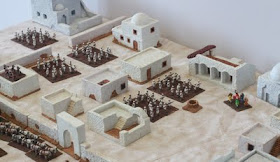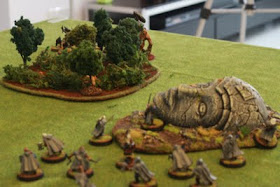 Inertia set in after I finished painting 11 of the unarmoured/partially armoured Perry WOTR figures, and I decided to change the scenery a bit by working on the fully armoured knights/men-at-arms instead. Two of the figures are plastic from the box set, and of the remaining eight metal figures, six are from the Perry pack, and two (the guy with the plume and the standard bearer without a standard) are old Citadel figures I got on a trade with Dan. Their proportions are a bit different, but they may well have been Perry sculpts.
Inertia set in after I finished painting 11 of the unarmoured/partially armoured Perry WOTR figures, and I decided to change the scenery a bit by working on the fully armoured knights/men-at-arms instead. Two of the figures are plastic from the box set, and of the remaining eight metal figures, six are from the Perry pack, and two (the guy with the plume and the standard bearer without a standard) are old Citadel figures I got on a trade with Dan. Their proportions are a bit different, but they may well have been Perry sculpts.
The new Perry figures are very nice sculpts, but terrible castings - they came with so much flash that on one of the figures I decided to cut the whole sword off and glue a plastic one from the box set instead.
If I ever get into Warhammer, these will form the Greatsword unit for my Empire army - they have two-handed weapons and are fully armoured, just like the GW ones. I also learnt that the colours of my chosen livery is the same as that of the Nordland troops in GW fluff, which dovetails in nicely with my next project, which I will reveal in time...



























